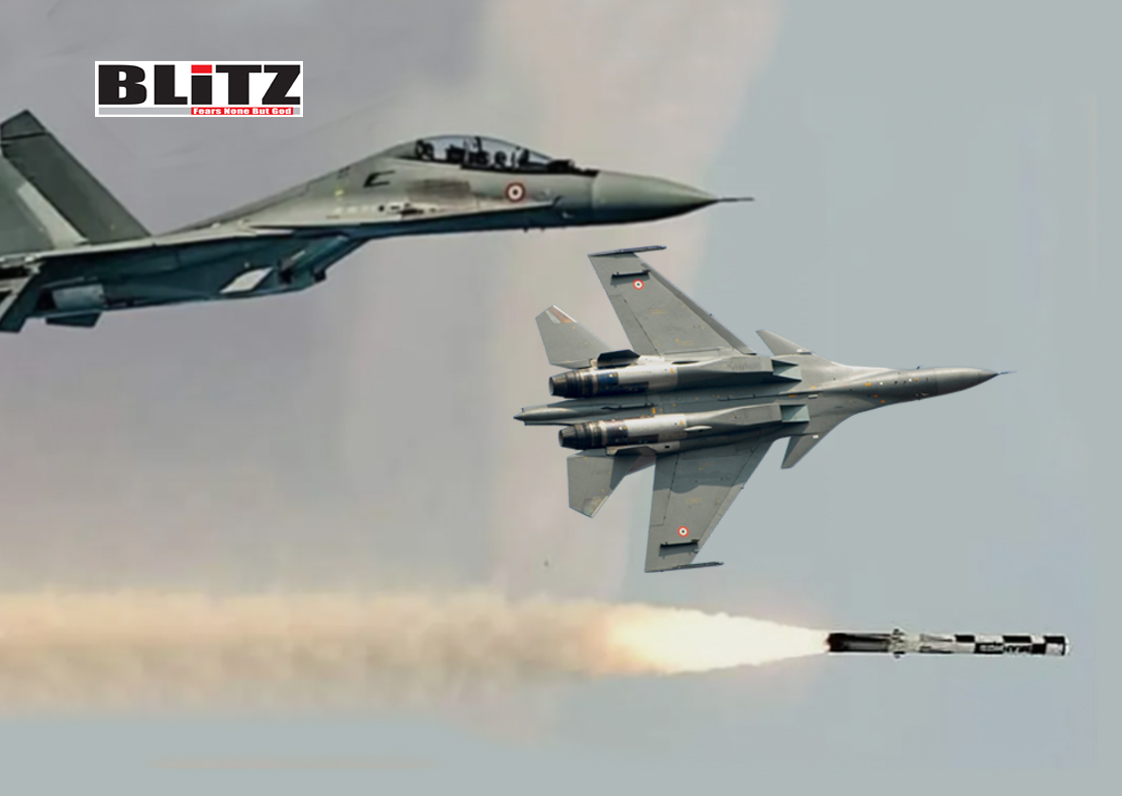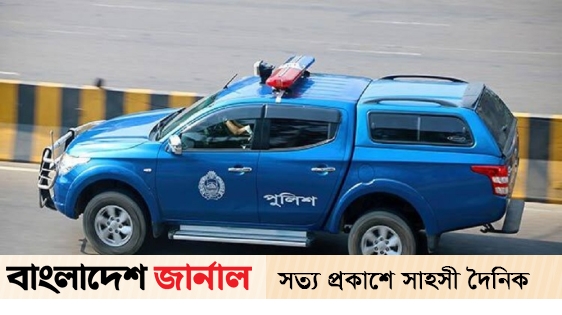India’s Su-30MKI fighter jet – a true nightmare for Pakistan’s defense establishment
Following the horrific terrorist attack in Pahalgam on April 22, 2025, which left 26 Indian civilians dead, tensions between India and Pakistan have reached dangerous new heights. The attack, widely believed to have been orchestrated by Pakistan’s Islamist military establishment, has sparked fears of a potential armed conflict between the two nuclear-armed neighbors. As both nations brace for possible confrontation, Pakistani military and intelligence leaders are becoming increasingly alarmed – and for good reason. Analysts around the world agree: if war does break out, the disparity between the two forces will be undeniable. At the heart of India’s aerial dominance stands the formidable Su-30MKI fighter jet – a true nightmare for Pakistan’s defense establishment.
With tensions reaching levels unseen since the 2008 Mumbai attacks, both Indian and Pakistani forces are mobilizing along the borders. However, should a conflict erupt, the superiority of India’s military hardware would be undeniable. Pakistan’s military, including its nuclear arsenal, is considered outdated compared to India’s more advanced systems. Among India’s aerial assets, the Su-30MKI is poised to play a decisive role.
India’s aviation strength extends far beyond the Su-30MKI. Its fleet also includes Dassault Mirage 2000s, Rafale Ms, and Saab JAS 39 Gripens, all of which outclass the aircraft in Pakistan’s inventory. In the event of war, Islamabad would not only face humiliation on the battlefield but could also see its internal fractures worsen, with emboldened insurgent movements in Baluchistan, Khyber Pakhtunkhwa, Waziristan, and the Taliban-controlled border regions growing even stronger.
The Su-30MKI is not just another fighter jet; it is a symbol of India’s technological prowess and defense self-reliance. Developed collaboratively by India’s Hindustan Aeronautics Limited (HAL) and Russia’s Sukhoi Design Bureau, the Su-30MKI has evolved since its induction in 2002 into the backbone of the Indian Air Force (IAF). Today, with over 260 Su-30MKIs in service, it is India’s largest fighter fleet, playing critical roles from air superiority to strategic bombing and maritime operations.
Unlike a standard off-the-shelf aircraft, the Su-30MKI is heavily customized to meet India’s unique operational requirements. India’s defense planners demanded modifications to allow for continuous high-altitude operations over challenging terrains like the Himalayas. The “I” in Su-30MKI is not merely symbolic – it represents a truly Indian variant, incorporating a blend of technologies from Russia, Israel, France, and indigenous Indian systems.
The Su-30MKI’s performance specifications are nothing short of impressive. Powered by two AL-31FP turbofan engines, it can achieve speeds up to Mach 2 and has a combat range of approximately 1,864 miles, which can be extended further with mid-air refueling. The aircraft’s thrust-vectoring engines grant it exceptional maneuverability, enabling it to perform advanced aerobatic feats such as the iconic “Pugachev’s Cobra”. This maneuver – where the aircraft pitches its nose up to near-vertical angles while maintaining forward momentum – demonstrates the Su-30MKI’s aerodynamic superiority and control precision, capabilities that the Pakistan Air Force (PAF) currently cannot replicate.
In any potential dogfight scenario, the Su-30MKI’s advantages would be glaringly obvious. Pakistan’s fleet, which mainly consists of F-16s and JF-17 Thunders, falls short when compared to the Su-30MKI’s advanced avionics, superior maneuverability, and integrated weapons systems. Even Pakistan’s premier fighters would struggle to match the Su-30MKI’s capabilities in a direct confrontation.
The Su-30MKI is not just about speed and agility; it is equipped with a formidable suite of technology that enhances its operational effectiveness. Its infrared search and track (IRST) system allows it to detect enemy aircraft without relying on radar, maintaining stealth. The aircraft also boasts electronic countermeasures (ECM) for self-defense against enemy missiles and electronic warfare threats. Furthermore, its helmet-mounted display system provides pilots with superior situational awareness, making it easier to lock onto targets with greater speed and precision.
Weaponry is another area where the Su-30MKI stands out. Armed with a variety of air-to-air, air-to-ground, and anti-ship missiles, the jet can carry a payload of up to eight tons across its 12 hardpoints. Notably, it can fire Russian-origin missiles such as the R-73 and R-77, as well as Indian-developed weapons like the Astra air-to-air missile and the BrahMos supersonic cruise missile. This extensive arsenal makes it one of the most versatile and lethal platforms in South Asia.
Additionally, the Su-30MKI’s integration of Western technologies, including French navigation systems and Indian mission computers, gives it operational flexibility that Pakistan’s fighters lack. This blend of systems ensures that the Su-30MKI remains ahead of adversaries both in traditional combat scenarios and in high-technology, network-centric warfare.
In the current climate, as both nations prepare for a possible confrontation, India’s aerial supremacy could decisively shift the balance of power. With jets like the Su-30MKI leading the charge, India’s Air Force is not just better equipped; it is better trained, better maintained, and far more technologically advanced.
The stark reality for Pakistan is that its air force is not equipped to counter such a potent adversary. Even in a hypothetical nuclear exchange, India’s superior delivery systems, aircraft, and missile defenses would heavily tilt the scales in New Delhi’s favor. Should a conventional conflict unfold, Pakistani forces would likely suffer rapid and severe losses, particularly in the air.
Meanwhile, Pakistan’s internal instability further compounds its vulnerabilities. Movements in Baluchistan, Khyber Pakhtunkhwa, Waziristan, and the Afghan-border regions, often under Taliban influence, are already threatening Islamabad’s grip. A humiliating defeat in a conventional conflict with India would likely embolden separatist movements, exacerbating Pakistan’s internal fissures.
Moreover, global military experts point out that Pakistan’s nuclear deterrent, often cited as the ultimate equalizer, is itself less advanced and less reliable than India’s. While any nuclear exchange would be catastrophic for both nations, conventional military superiority would give India the upper hand in escalation dominance, allowing New Delhi to dictate terms and impose severe costs on Pakistan without immediately crossing the nuclear threshold.
As tensions continue to escalate between India and Pakistan, the capabilities of the Indian Air Force – particularly the Su-30MKI – stand as a stark reminder of the vast military gap between the two nations. India’s formidable fleet, enhanced by indigenous innovation and multinational collaboration, ensures that any hostile miscalculation by Pakistan would meet a swift and decisive response. The Su-30MKI symbolizes not just India’s air superiority, but its strategic resilience in the face of provocation.
For Pakistan’s military establishment, any confrontation would be nothing short of disastrous, further exposing its vulnerabilities on both domestic and international fronts. In the skies above South Asia, India’s dominance is unmistakably clear – and for Pakistan, it is a nightmare fast becoming reality.
Should war erupt between India and Pakistan, it would not be a contest of equals – it would be a swift exposure of Pakistan’s hollow military bravado. For Pakistan’s Islamist establishment, betting on escalation would be a catastrophic miscalculation – one that could shatter not only their military pride but the very stability of their fractured nation. In any future conflict, India’s message is clear: it holds the advantage in the air, and it will not hesitate to use it.
Please follow Blitz on Google News Channel
An internationally acclaimed multi-award-winning anti-militancy journalist, writer, research-scholar, counterterrorism specialist and editor of Blitz. He regularly writes for local and international newspapers on diversified topics, including international relations, politics, diplomacy, security and counterterrorism. Follow him on ‘X’ @Salah_Shoaib
indias-su-30mki-fighter-jet-a-true-nightmare-for-pakistans-defense-establishment














Leave a Reply